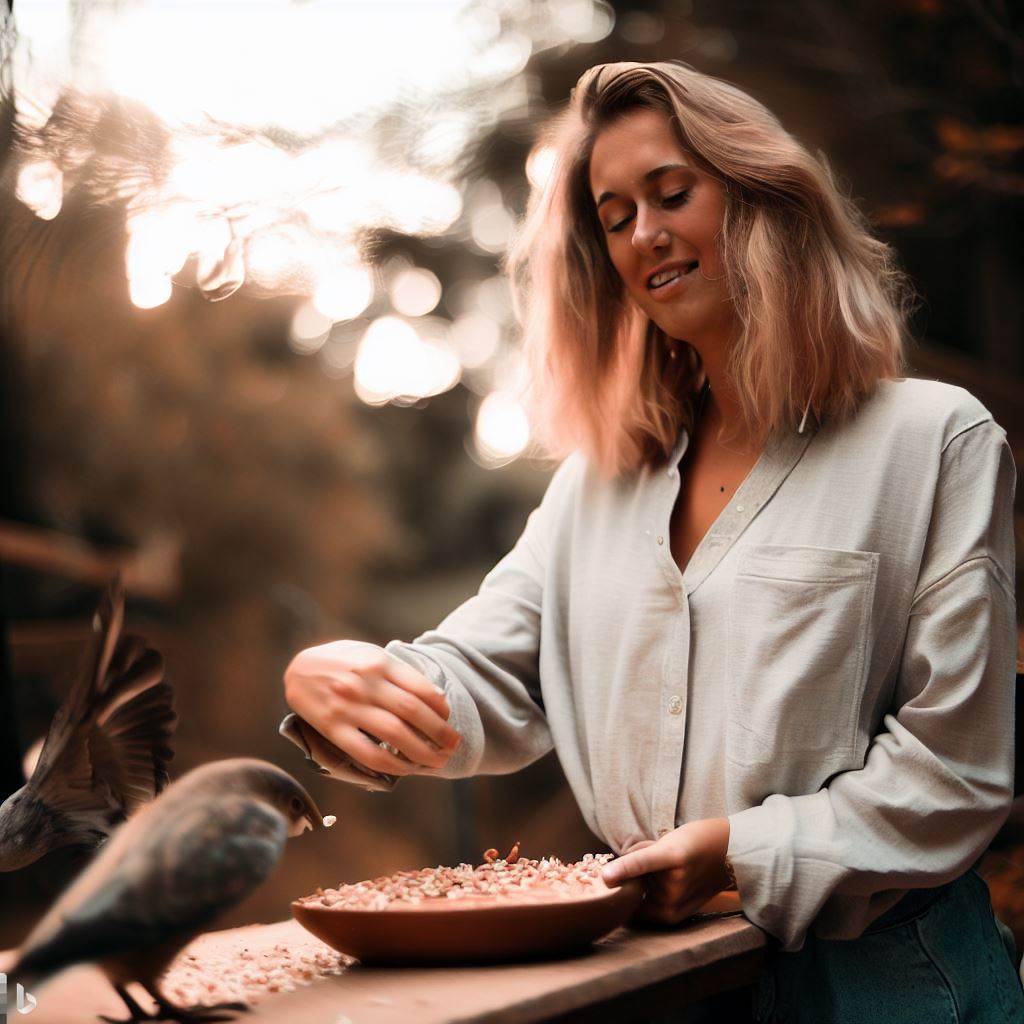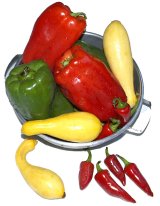
Would I go where others before me have gone – to starve and die, when reintroduction efforts failed because I did not recognize food, when I saw it? Food, everywhere I looked, but would I, could I starve in a Garden of Eden? Sadly, the answer to this is yes, if I have no idea that what I see IS food.
We aviculturists have recognized the fact that a bird may not want or KNOW what is good for them. Some of the things that they should be eating are the very things they fling, hurl, toss, splatter on floors and walls, or back away from. These are the foods that contain the vitamins and minerals birds need in a well balanced diet.
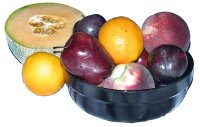
We mix good, healthy, foods with things our birds like. We add color or take it away. We offer food dry, wet, cooked, boiled, par boiled, baked and raw – all in an effort to get our birds to TRY it. Few, if any bird owners have not at one time come away shaking their heads in failure.
Why? Perhaps because we often find ourselves working under limitations not found with parent reared birds. In the wild, chicks are taught what to eat. They learn what foods are safe, by observing what and how their parents eat and what their parents feed TO them. They learn by EXAMPLE! Most birds will continue to offer food to chicks once they fledge. Many of us have observed this by watching wild flocks actions in our own backyards.
Pet owners, breeders, or scientists do not know exactly what is a perfect diet for any bird, though many do make claims. What the scientists do know and can share with us are the analysis of birds’ stomach contents. The vitamin and mineral content have been estimated from the few examples offered.
Observation of different species has also been a help. Different species choose different foods to eat. Many species can and will eat seeds, greens, earth and minerals from clay-like mounds. Some prefer a diet of nectar, while some include live insects or nuts to complete their diets.
The mandible (bill) is a good indicator of the food requirements of a species. If the bill is long, slender and pointed it may be a nectar eater. These birds need a longer length bill to reach the bottom of a blossom to feed. A seed or an insect eater’s beak will be thicker and look more like a “V” laid on its side, thus a “<“. There is also variety within this bill formation as well – various lengths, widths and thicknesses. Birds with this shaped bill are for the most part considered soft bills.
Some birds have a curved beak and these birds are normally called either hookbills or parrots. I know more about this group of birds (containing over 350 species) as we have owned many of them for a good number of years.
The diet of different hookbills varies and thus they should be offered a good variety of food. Care should be taken with different species, as they will have different needs.
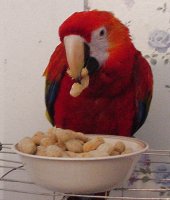
There isn’t enough space to list everything and niether do I have all the facts and information. I can however touch on a few of a bird’s nutritional needs and offer a general diet (see Part II A Healthy Diet) fit for most avian species. Learn to modify to fit your species’ needs. This may mean you will make up different bowls of food because many of us keep mixed species. We must to learn to be creative!
Fat content and protein are two of the most important food areas to consider. Some species such as African greys, cockatoos and amazons tend to have problems with excessive weight. These species should not be fed a high fat diet.
Most people see the word fat and think BAD – heart problems, clogged arteries, overweight. However, this is not quite the whole truth. There are differences between saturated and non saturated fats. Some saturated fats can cause problems with cholesterol resulting in clogged arteries and contributing to heart problems. These fats have earned them the name “bad” fat. On the other hand, we are learning that polyunsaturated fats are not bad at all, but rather HEALTHY!
Some nuts actually have been determined to be health aids, a good source of protein. Many doctors claim nuts added to the diet are healthy and although they contain fat they also control fat. They have learned that just a sprinkling of chopped walnuts in the diet has helped to lower cholesterol in people. Since not a whole lot is really known about the food or vitamin needs of psittacines, many of our findings and thoughts are derived from the needs of humans. Specific dietary requirements are really unknown. We have learned through trial and error – observing what works, what doesn’t work and what causes problems. We also have to consider other facts when offering foods to our birds – different species, differing needs.
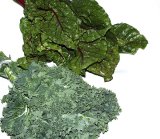
I have read that a bird needs appropriate amounts of certain vitamins and minerals in order to absorb other vitamins or minerals. An example of this is the relationship of calcium, phosphorous and vitamin D. In the wild, it is many times a case of feast or famine! But the birds appear to have mechanisms which allow them to adjust to conditions.
Much has been learned from captive breeding efforts and from pet bird owners as more and more birds are being housed and fed under different circumstances. We in aviculture have made great strides in just the last 30 years. And we learn more and more each day about the needs of our birds.
Other examples of different species needs can be seen in conures and macaws, which for the most part require a higher fat, low protein diet. Amazons also are sensitive to too much protein.
Also worthy of mention is the choice of cooked vs raw foods. There is a growing belief (related to human diets) that some vitamins are not as readily broken down in our bodies if eaten raw. Most of the information I have read has had to do with the orange veggies such as carrots, sweet potatoes, yams and the like.
It has been stated that in order for us to get the benefit of beta-carotene (vitamin A), vegetables need to be par boiled or cooked to some degree so that our bodies can absorb the vitamins. Remember, this was discussed in regards to the human body, so we do not know if it affects our birds’ chemistry make up as well. It is entirely possible that birds store certain vitamins in their bodies and when that supply runs low then they eat the very same vegetables and fruits which they ignored only yesterday. This can go on for long lengths of time and it most certainly could explain the sudden turn around that some of our birds make. What they turn their nose up at today may be their favorite food for the next 6 months.
A diet high in iron can cause many illnesses in the avian species. The Mynahs, especially, have been found to have a problem with it, and sadly too much can lead to death. For example, limiting figs and grapes in the diet, both of which are high in iron, may be of help. There is also a belief that acidic foods in the diet increase the absorption of iron, so foods with high acidity should be fed at different times from foods high in iron.
There is also the ongoing war over iron, as more and more breeders are questioning why they have dead birds. They have taken some of the prepared foods and had them tested by private labs. The results coming in are raising some really interesting questions and fill us with doubt about some of the feed manufactured for our birds.
What seems to be the problem? There are two different kinds of iron. The first is ferric which is found naturally in foods and in dirt and is commonly eaten by birds. The second is ferrous sulfate which is more readily absorbed, but NOT found naturally in birds’ bodies. Yet many food manufacturers include it in the diet. Too much iron in the diet can harm bone, skin and joint, pancreatic, pituitary, thyroid, parathyroid, adrenal, heart, gonadal, gastro intestinal, enhance infection, liver, and white blood cells, just to name a few.
We are seeing problems with vitamin toxicity (different vitamins) both in hand feeding formulas and in pelleted diets, that have resulted in birds losing their lives. THIS is the reason I offer a more natural diet and have drifted away from prepared mixes.
If you purchase an extruded or pelleted diet, learn to read the label to see if your bird could fall into this trap. If you purchase treats, whatever…READ THE LABEL’s! It could mean the difference of life or death!
We also need to consider geography or where a bird lived in the wild. It may be desert, it may be rainforest or fields or high up in the mountains where the air is very thin. In each of these locations the foods not only vary, but range from plentiful to sparse. Lifestyles and activity of birds also vary. What part this may play in the food needs of the various species we are not really sure. One idea, is that some desert species, are said to store vitamins in their systems longer than species found in less dry regions such as the rainforests. If this IS the case, additional care should be used when feeding these species to avoid vitamin and mineral toxicity. It also may be the answer to our question of why birds will not touch one food for months then do a turn around and gorge themselves on it the next day.
In the wild minerals found in clay deposits such as the Manu Cliff’s in Peru and others found in growing plants help to neutralize poisons or toxins in some of the plants and fruits that birds eat.
In spite of guess work, observation, on site study, hard work and much dedication we still in all honesty do not really know enough. Much of aviculture is and has always been guess work or trial and error.
But there is also the good side. The number of birds produced from captive breeding efforts far outweigh those found in the wild. We must be doing something right! Still, it’s a challenge we in aviculture face and need to keep working at.
We have been breeding birds for many years now, concentrating on many of the macaw species. Detailed information on the diet we feed to our birds can be found in Part II A Healthy Diet

